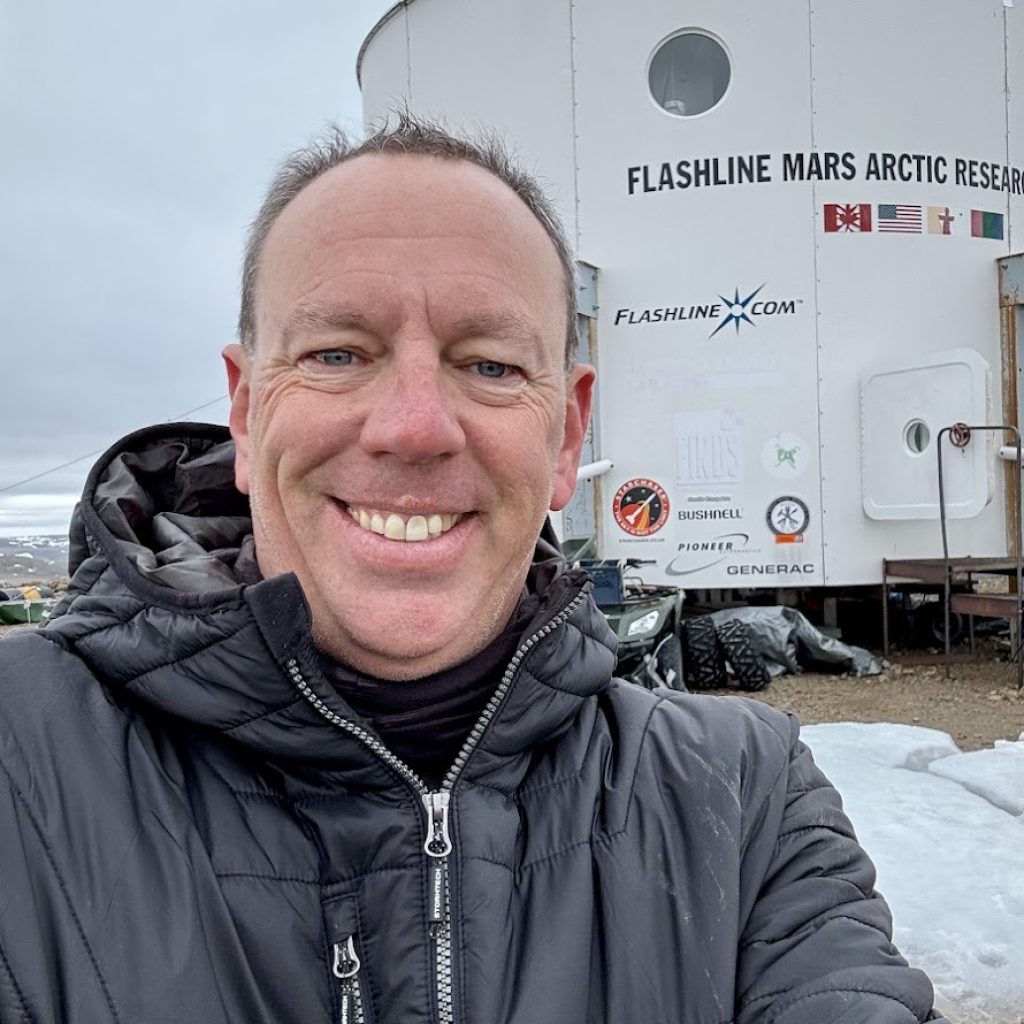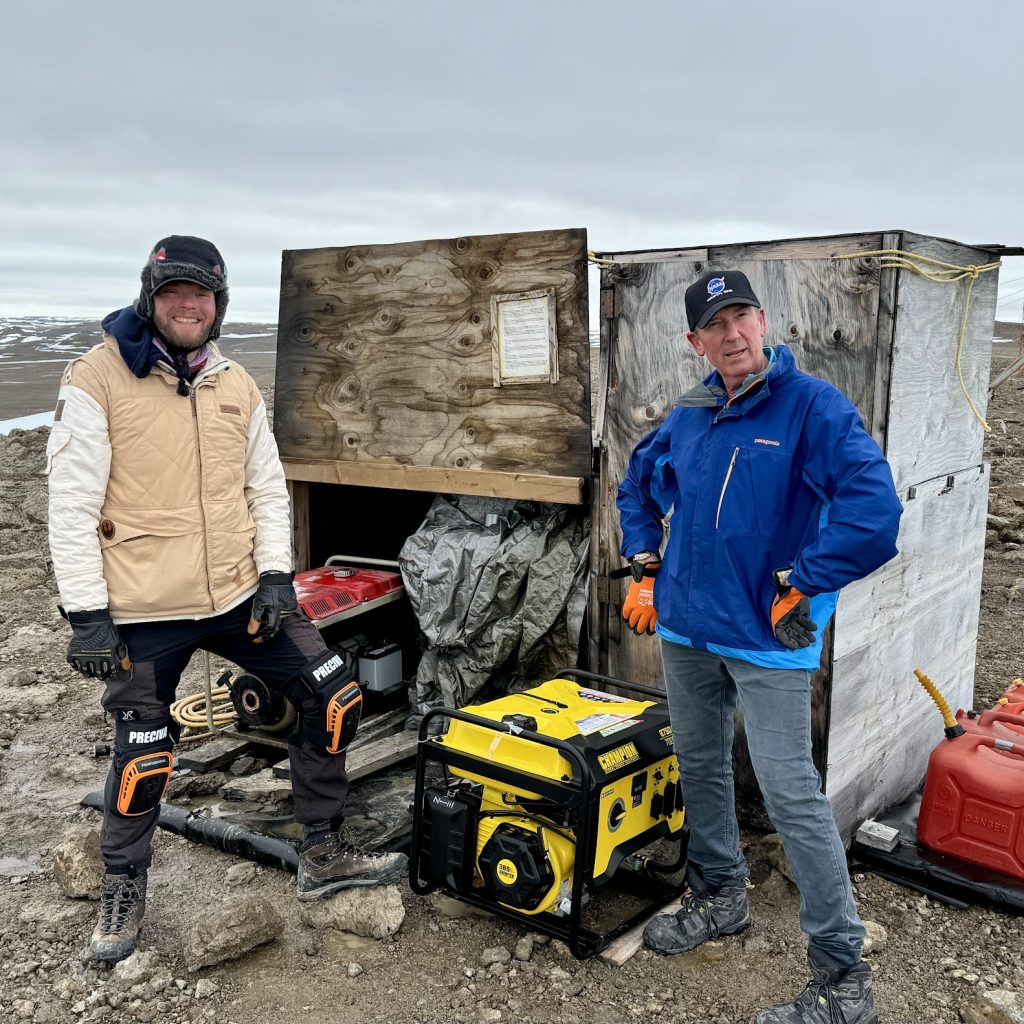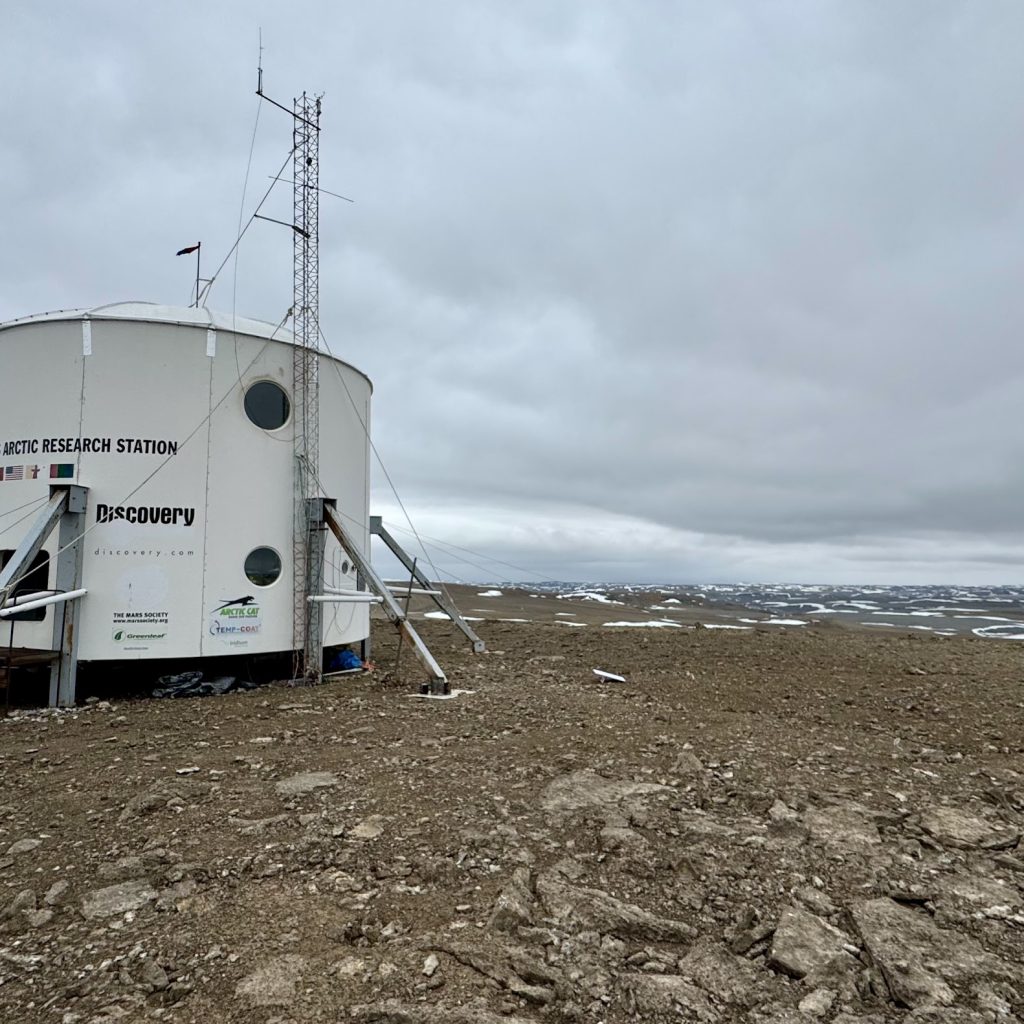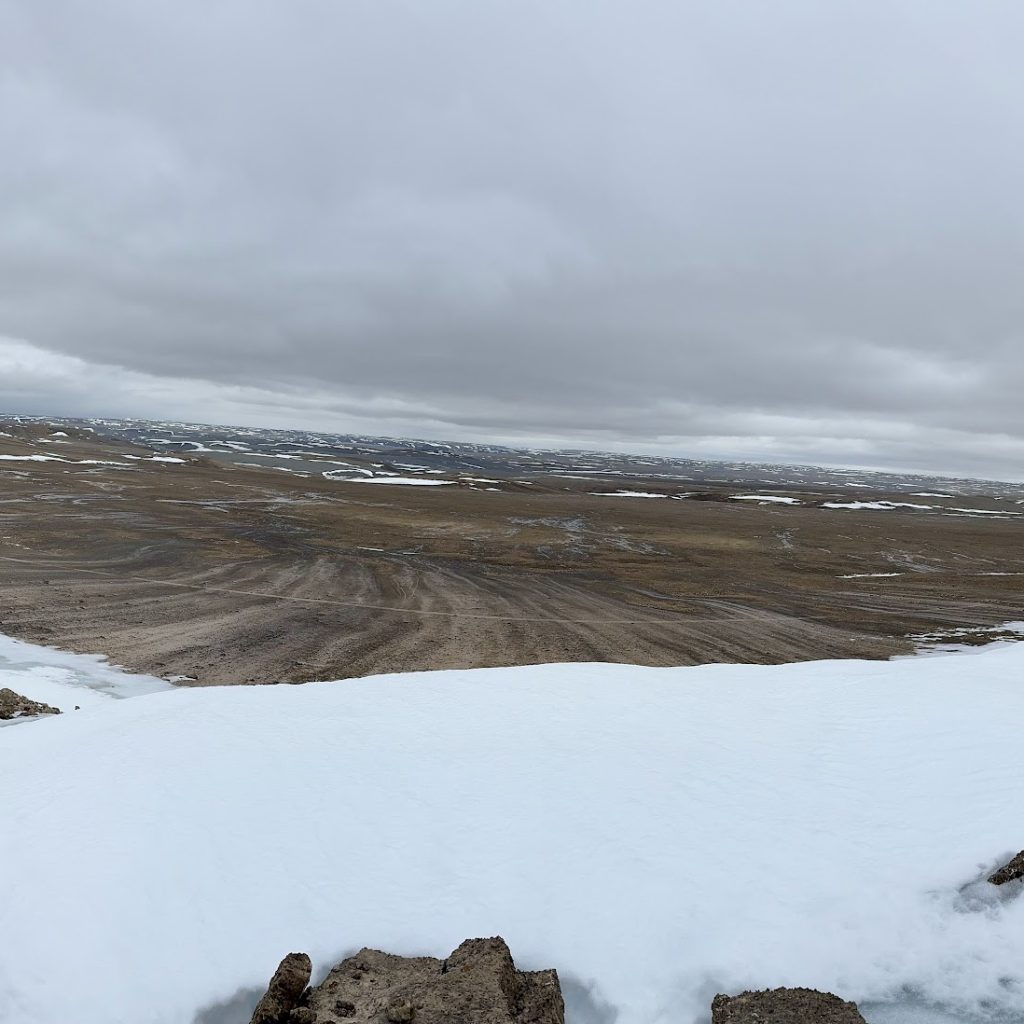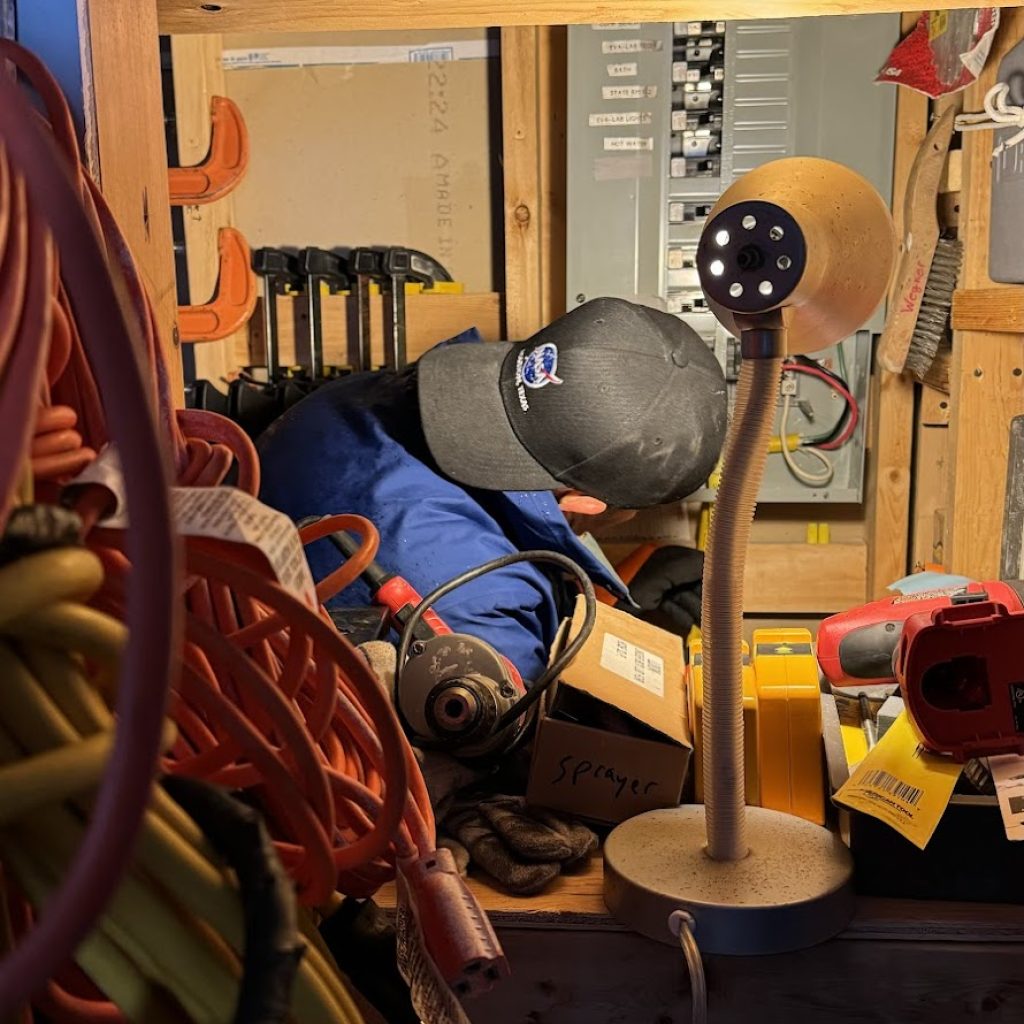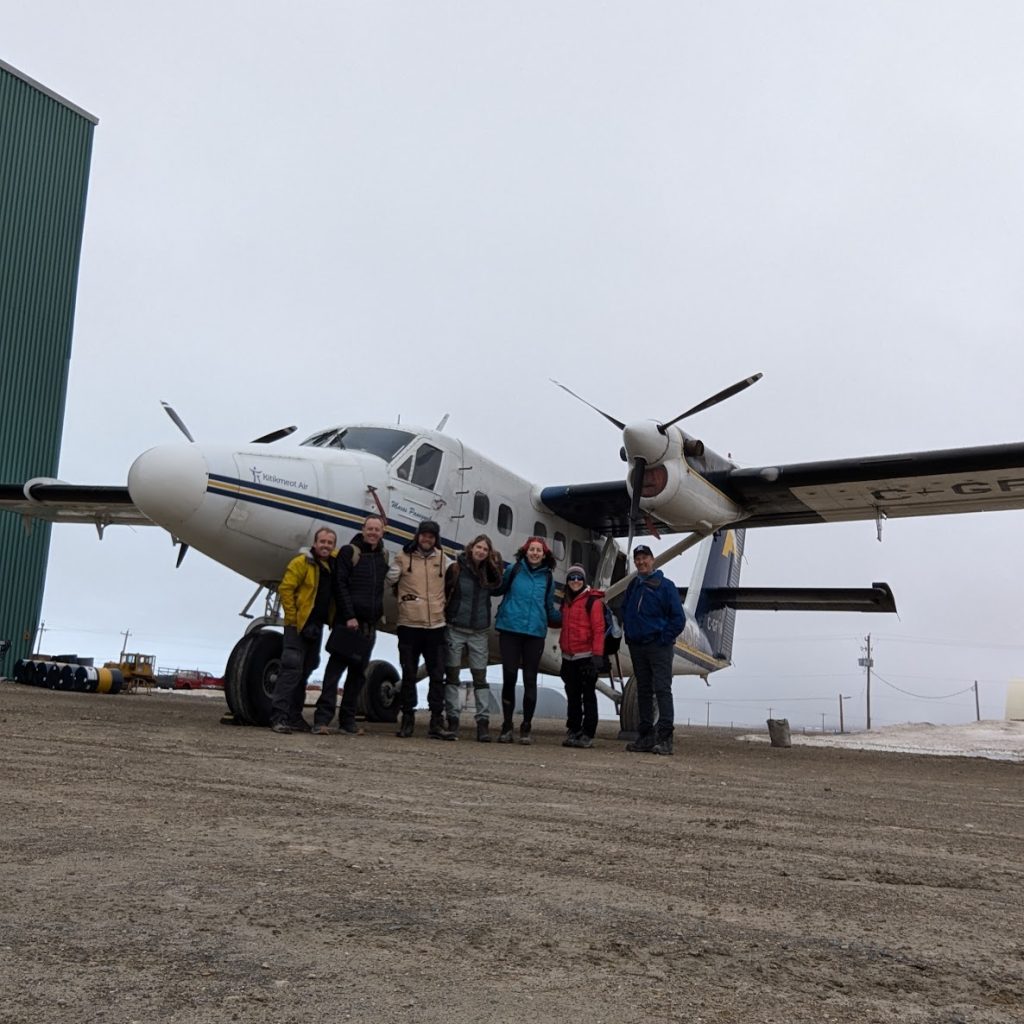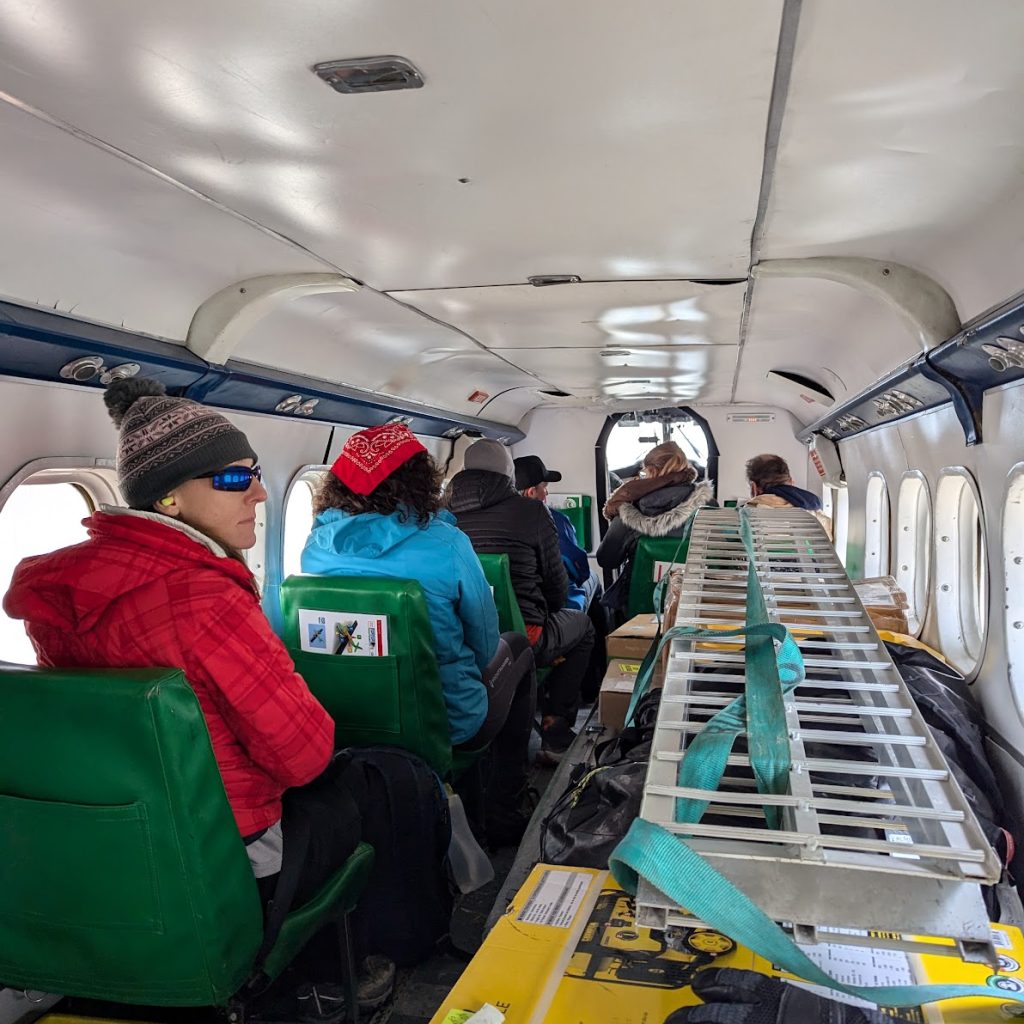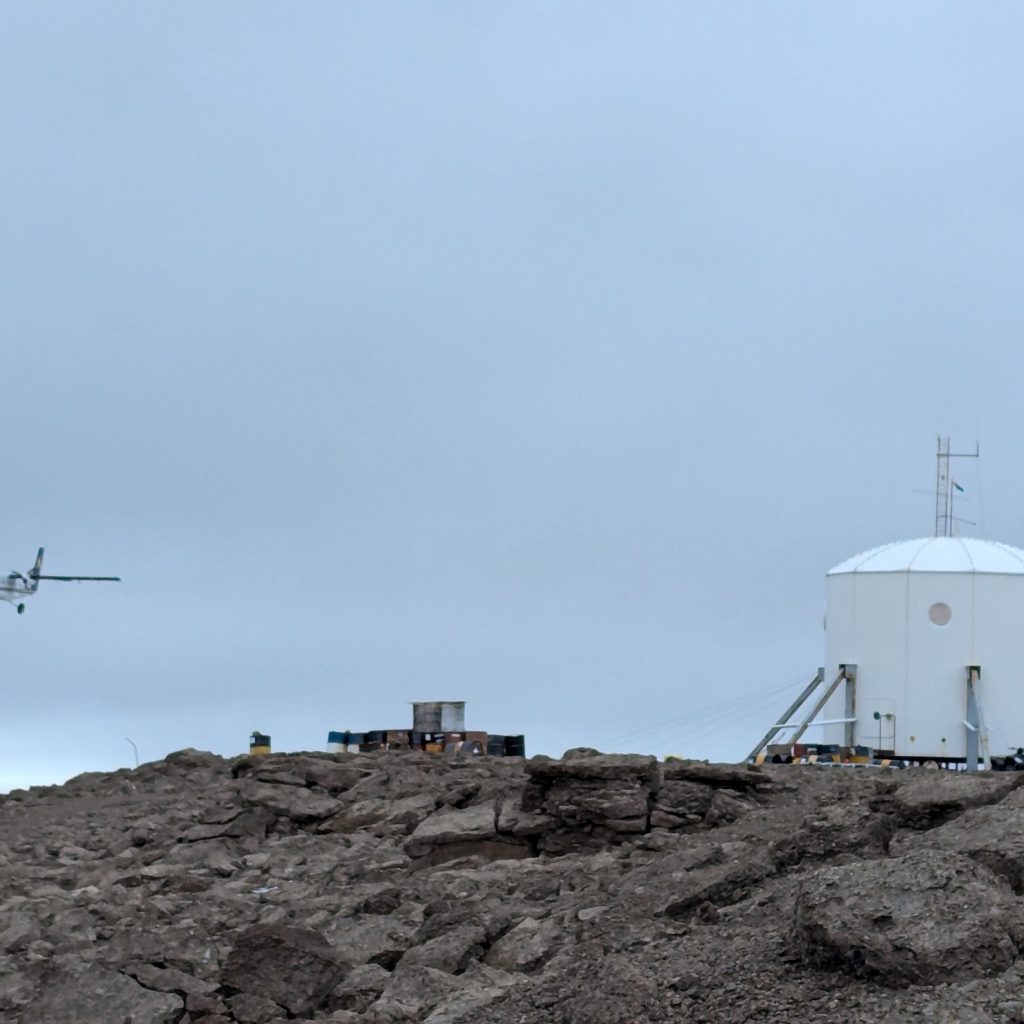Flashline-16 Daily Report 02-07-2024
Author: Michael Andrews – Crew Logistics
Greetings from Mars! Or Devon Island at least. After a three day weather delay, the crew has successfully arrived on the world’s largest uninhabited island, located in Nunavut territory. The team began the day with the following objectives:
- Arrive on Devon Island and settle into the station
- Maximize the amount of drums and trash returned on the plane
- Restore power and internet connectivity to the station
We awoke to our final breakfast in Resolute Bay, gathered some last-minute supplies, and prepared for a 10:00 AM go/no-go call. Fortunately, there was a small window to attempt the landing, and we rapidly loaded our supplies onto the Twin Otter plane. After a 45-minute flight, we first set eyes on the habitat. It looked good – no obvious issues! After a few passes over the runway, our pilot had the landing planned out and expertly executed it. We briefly admired the austere environment with our feet on the ground before stepping into my logistical plan.
We anticipated that we had about 30 minutes before the plane had to take off, and we needed to offload as much remaining trash from last year’s mission as possible in that time period. This also included last year’s barrel of urine, which weighed more than 400 lbs. The team originally was to split up into two groups: one to gather trash at the habitat and one to survey water sources. If the habitat was internally compromised or water was scarce, we would abort the mission and immediately return. However, the obvious amount of snow and snowmelt rivers that we saw during our landing approaches allowed us to fully focus on trash and station inspection. Mission Specialist Woods quickly powered up an ATV and began shuttling trailers of trash to the plane and would return with our new equipment. We had two trailers at our disposal, so I orchestrated a plan to “hot swap” trailers already loaded with trash to maximize time in transit. Crew Engineer Robbins also came up with an ergonomic way to roll the urine drum into the unhitched trailer as it was standing up, before rolling the trailer to the ground to be hitched. In the end, we were able to load the urine drum and 3 trailers of trash in an hour.
Once the Twin Otter took off (and buzzed our station), we began to work our most critical tasks to restore functionality to the habitat. I powered up our Starlink user terminals via a mobile battery pack, and installed our new waterless and unisex urinal. Crew Engineer Robbins led the effort to power up two of our generators. Mission Specialist Woods activated an air quality monitor and began monitoring CO2 levels for crew safety and comfort. Chief Science Officer Nicholson and Health and Safety Officer Swarmer unpacked all food and began cleaning the kitchen and living quarters for the crew. Commander Cinelli checked in on all efforts to ensure the team was hydrated and took breaks to not get strained of fatigued. But a special shout-out goes to Executive Officer Trevino, who brought 240V power to our station! This last effort required help from all team members under his direction and continued well into the night, but eventually allowed us to power many utilities at once: lights, Starlink, battery pack charging, and heaters. We all marveled at how quickly we could turn a dormant station in such a remote location into a habitable and capable living quarters, with just a bit of technology and engineering!
The team had a first dinner of some rehydrated camping dinners and debriefed on their progress today. Everyone was worn out but also extremely excited to finally be on Devon Island. After unpacking their belongings into each stateroom, the crew members retired to their beds with a clear plan of responsibilities and objectives for tomorrow.
The next three days will be very similar before we truly begin simulation on July 6th. The team will work various engineering tasks to restore and upgrade the station, but we will also perform some scientific expeditions in the meantime. If these three days are fruitful, we will begin a 4-day simulation, followed by one day of preparing the habitat for winter before leaving on July 11th.
Finally, I’d like to share some personal thoughts about this extremely exciting day. We have spent the last three months preparing for this mission as a crew, but there is something that you can’t be prepared for: the first sight of the FMARS habitat in that initial fly-by. A small white cylinder nestled on the edge of an enormous and desolate crater. And once I put my first foot on the island and looked around at the vast expanse towards the horizon, it’s easy to feel the analog of landing on another world. I could also feel that the entire crew felt a strong sense of mission as we worked together in the freezing rain with good spirits and a lot of collaboration. We’re going to sleep well tonight, and we’re going to work well tomorrow!
